Moving to Brisbane - What to Know Before You Relocate
Get ready to explore Brisbane, the "River City" of Australia! It's where urban energy meets laid-back vibes. This guide will help you with moving to Brisbane and all you need to know, like its friendly locals and warm climate. Brisbane isn't just a location, it's a lifestyle you'll love being a part of. So, let's dive in and discover the vibrant "Sunshine State" culture that makes Brisbane truly special!
44 min read
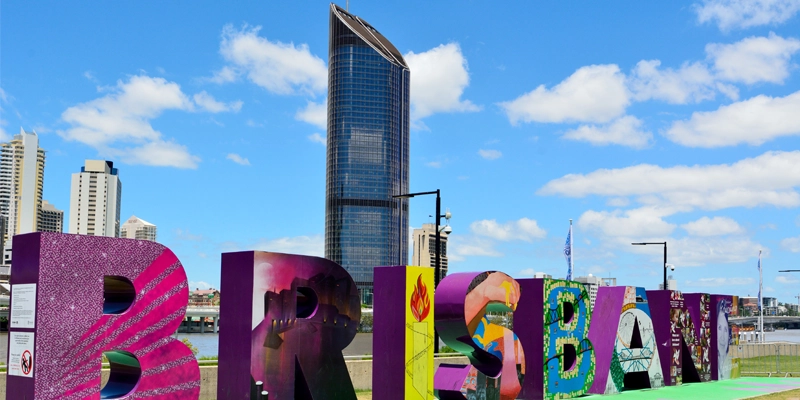
Key takeaways
- Brisbane's warm subtropical climate means plenty of sunshine year-round, ideal for those looking to move to a location with an outdoor lifestyle and mild winters.
- Compared to other major Australian cities, Brisbane offers more affordable living options, making it an attractive city for relocation, with a range of housing options that fit various budgets.
- With a resilient job market and sectors experiencing growth, moving to Brisbane could mean new and promising career paths, especially in healthcare, technology, and construction.
- The city's strong community vibe and its array of festivals, arts, and culinary experiences make it a culturally rich place to live, ensuring newcomers can enjoy a vibrant social life.
- Brisbane is a great move for those who value education, boasting several high-ranking universities and a strong educational infrastructure that caters to students of all ages.
- Relocating to Brisbane means easy access to beautiful natural surroundings, from nearby islands and beaches to lush national parks, providing a quick nature escape from urban life.
- The city's comprehensive public transport network facilitates easy movement around the city, which is a significant plus for newcomers getting to know Brisbane and settling in.
Welcome to your comprehensive guide to moving to Brisbane, the effervescent heart of Queensland, affectionately dubbed the ‘River City’. Nestled along the meandering Brisbane River, this city is a tapestry of vibrant culture, lush landscapes, and burgeoning business districts. It's a place where modernity brushes against tradition, where the pace of life is as leisurely or as fast as you wish it to be, offering an unrivalled quality of life under the generous Queensland sun.
As you contemplate moving to Brisbane, this guide serves as your essential companion, providing you with the insights and essential information you need to navigate the city before you relocate here. Whether you’re drawn by the promise of sunnier days, the allure of a thriving job market, or the charm of its diverse neighbourhoods, this guide will walk you through each aspect of Brisbane life – including growth suburbs when finding a home, the growth sectors in the job market, the nuances of the city’s weather patterns, and the best spots to soak up the local culture and community spirit. Let’s embark on this journey together, ensuring you’re well-prepared to embrace all that River City has to offer.
A snapshot of Queensland
| Number of people living in Queensland | 5,156,138 |
| Number of families | 1,366,657 |
| Median Age | 38 |
| Number of private dwellings | 2,190,424 |
| Average number of people per household | 2.5 |
| Median weekly household income | $1,675 |
| Number of people attending an education institution | 1,245,055 |
| People who travel to work by car | 65.4% |
| People who travel to work by public transport | 4.1% |
| Unemployed rate | 5.4% |
Source: Australian Bureau of Statistics Census 2021
Why move to Brisbane?
In the heart of Queensland, affectionately known as the Sunshine State, it is easy to understand why people move to Brisbane. Brisbane city marries the laid-back charm of a small town with the dynamic pulse of an emerging global city. Often referred to as "Brisvegas" for its vibrant nightlife and entertainment, Brisbane is a magnet for those looking to relocate to a place where the lifestyle is enviable and the opportunities are plentiful.
The city's economy is on an upswing, with thriving industries from technology to creative arts, making it an incubator for innovation and entrepreneurship. The cost of living, while on the rise, remains more palatable here than in the southern counterparts, Sydney and Melbourne. This affordability extends to the housing market, where the dream of owning a home is still within reach for many.
But what truly sets Brisbane apart are its sublime natural settings and cultural landmarks. From the serene Brisbane River that meanders through the city, to the lush gardens of the South Bank Parklands and the sandy shores of nearby Moreton Island, there's a seamless blend of urban and natural landscapes. The city's close proximity to world-renowned attractions like the Gold Coast’s sparkling beaches or the tranquil rainforests of Tamborine Mountain makes it a geographic jewel.
In education, the city hosts acclaimed universities attracting global talent, further energising the youthful cityscape. The capital of the Sunshine State also boasts a well-integrated public transport system, connecting surrounding suburbs with the bustling central business district(CBD), making commutes more a pleasure than a chore. With its flourishing cafe culture, burgeoning craft beer scene, and the warmth of a community where people still greet each other with a smile, Brisbane’s lifestyle is one of its best selling points.
Moving to Brisbane as your new home means becoming part of a community where life is enjoyed outdoors, where work-life balance is achievable, and where every neighbourhood tells its own unique story, from the bohemian West End to the stylish precincts of New Farm and the heritage-rich Teneriffe. Here, life is not just lived; it’s celebrated under the generous Queensland sun.
Overview of Brisbane
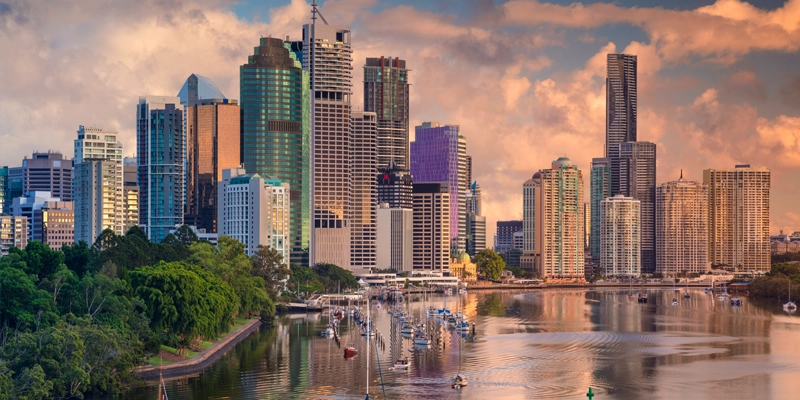
Australia's third-largest city, following Sydney and Melbourne, with a population that embraces growth and diversity. Brisbane combines a laid-back lifestyle with the perks of a cosmopolitan metropolis, making it an increasingly popular choice for both Australians and international migrants.
The city's geography is as varied as it is spectacular, characterised by its winding river, which is a focal point for recreation and transport. The CBD, a blend of historic buildings and contemporary architecture, is not just a hub for business; it's also a centre for culture, with numerous theatres, museums, and galleries.
Surrounding the central city is a patchwork of suburbs, each with its own distinct flavour. From the leafy serenity of Paddington and the family-friendly atmosphere of Chermside to the trendy and vibrant West End and the upscale riverside enclave of Hamilton, Brisbane offers a diverse range of communities to suit different lifestyles and preferences.
The city's infrastructure is geared towards supporting a growing population, with significant investments in public transport and road networks. A network of buses, trains, and ferries makes getting around straightforward, while the development of cycleways and walkways encourages a healthy, active lifestyle.
Brisbane is a city that's always looking ahead, encouraging innovation and entrepreneurship. It's become a thriving hub for industries like technology, healthcare, and education, with renowned universities and research institutions calling the city home. You've got the University of Queensland, the Queensland University of Technology, and even the Queensland Institute of Medical Research.
Getting to know Brisbane's regions, cities, and towns
The heart of Brisbane is the buzzing central business district, surrounded by a bunch of inner suburbs like the cultural hotspot of South Bank and the trendy Fortitude Valley. And hey, beyond these areas, the city stretches out in all directions - north, south, east, and west. But wait, there's more! You've got the bayside communities for that coastal vibe, and if you venture out to the rural outskirts, you'll find a more peaceful, country-style living. It's this amazing mix of regions that makes Brisbane such a cool place with diverse experiences and communities.
Central Business District (CBD) and inner suburbs
- CBD: The heart of the city, Brisbane's CBD is a blend of historical buildings and modern architecture, with a range of shopping, dining, and cultural experiences.
- South Bank: Known for its cultural institutions, parklands, and beach, South Bank is a hub for leisure and entertainment.
- Fortitude Valley: A nightlife epicentre with vibrant music scenes, clubs, and a diverse range of eateries.
- West End: An eclectic, bohemian neighbourhood known for its weekend markets and an array of international cuisines.
- New Farm: Home to New Farm Park and the Brisbane Powerhouse, it's a trendy area with a vibrant community spirit.
Northside
- Chermside: Home to one of the largest shopping centres in Australia, this is a rapidly growing suburban area.
- Ascot and Hamilton: These suburbs are known for their prestigious properties and the Racecourse Road dining precinct.
Southside
- Mount Gravatt: Offers panoramic views from Mount Gravatt Lookout and is home to one of the major campuses of Griffith University.
- Sunnybank: Renowned for its Asian culture and cuisine, providing a slice of the East with authentic dining and shopping experiences.
Eastside
Brisbane's bayside communities stretch along the coastline of Moreton Bay, offering a seaside lifestyle that's still within reach of the city's conveniences.
- Manly and Wynnum: Coastal suburbs that are gateways to Moreton Bay, offering a seaside lifestyle with a marina, esplanade, and weekend markets.
Westside
- Indooroopilly: Features a large shopping centre and is a popular area for families due to its proximity to the University of Queensland.
- Toowong and Taringa: These areas host a mix of residential and commercial properties, with good access to public transport and the Brisbane River.
Greater Brisbane
- Ipswich: A historic town with a rich heritage and an evolving food scene.
- Moreton Bay Region: Includes seaside towns such as Redcliffe and Scarborough, known for their laid-back lifestyle, a long jetty popular for strolling and fishing, and community events.
- Logan: A multicultural district that celebrates its diversity through food, festivals, and community programs.
- Cleveland: The commercial heart of the Redland City area, with access to North Stradbroke Island via ferry.
- Victoria Point: Offers coastal parks, a cinema complex, and ferries to Coochiemudlo Island.
- Shorncliffe: Features a pier, and is known for its old-world charm with well-preserved Victorian and Queenslander homes.
- Sandgate: Close to Shorncliffe, known for its picturesque walking and cycling trails along the coastline.
Surrounding towns and rural areas
- Samford and Dayboro: Offer a country lifestyle with community markets, festivals, and local arts just a short drive from the city.
- Lockyer Valley: Known as Australia's 'Salad Bowl', it's a major agricultural area that supplies fresh produce to the city.
Brisbane's iconic landscape
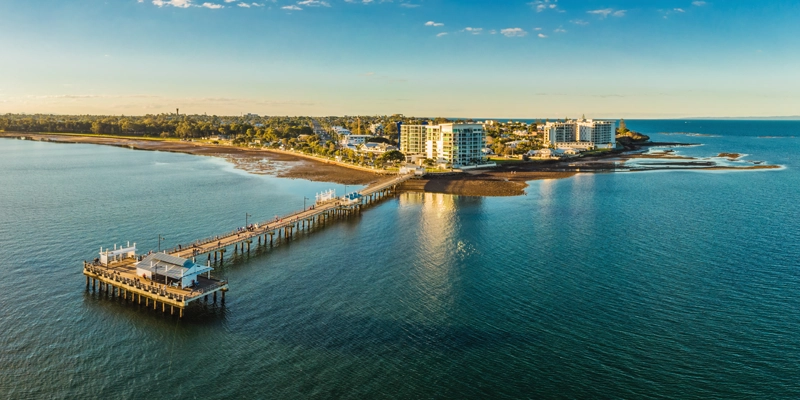
Nestled along the winding Brisbane River under the Queensland sun lies Brisbane, a city that harmoniously blends urban sophistication with a relaxed, outdoor lifestyle. It’s a place where the natural world is always within reach, offering its residents a picturesque backdrop to their daily lives. The city's pride, Mount Coot-tha, stands regally, affording breathtaking panoramic views that stretch from the city’s skyline to the distant blue of Moreton Bay. The river itself is a hub of activity, lined with walking paths and parks, and dotted with the famous CityCat ferries that have become a symbol of the city's easy-going yet dynamic character.
Just a stone’s throw from the city, the natural splendours of Moreton Island emerge from the sea, a pristine sanctuary of sand and water. Back on the mainland, the South Bank Parklands offer urban tranquillity with its unique Streets Beach, while the two Brisbane Botanic Gardens—city and Mt Coot-tha—provide a lush retreat for those seeking solace among flora and fauna. The D’Aguilar National Park promises a wilderness escape where the bush meets the city, and the Lone Pine Koala Sanctuary offers intimate encounters with some of Australia’s iconic wildlife.
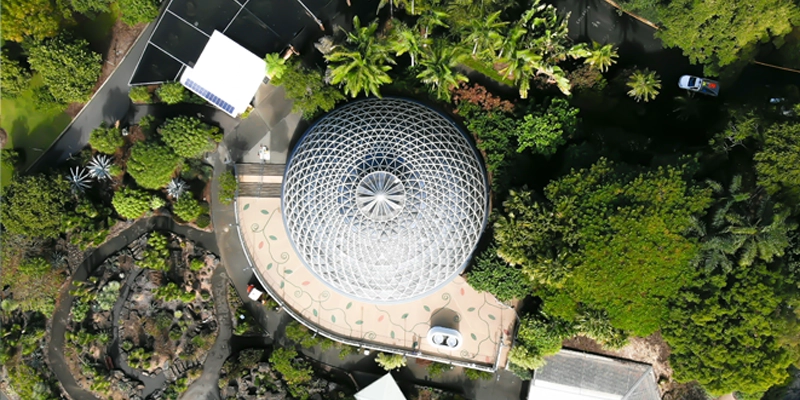
For the more adventurous, the heritage-listed Kangaroo Point Cliffs provide both a scenic vista and a vertical challenge, and the striking Glass House Mountains beckon climbers and hikers alike with their imposing presence. And, of course, the local charm of North Stradbroke Island, affectionately known as "Straddie," with its blend of coastal headlands, sandy beaches, and serene inland lakes, showcases the idyllic coastal lifestyle available just off Brisbane’s shore.
These landmarks and landscapes define Brisbane, a city where life is lived outdoors as much as in, and where the beauty of nature is always a part of the urban experience.
What's the weather like in Brisbane?
Brisbane is famous for its amazing subtropical climate, with plenty of clear blue skies and sunshine throughout the year, which makes your move to Brisbane an any-season event. Here's what you can expect from each season:
Brisbane in Spring (September - November)
Spring in Brisbane is like a milder version of summer, with less humidity to deal with. The temperatures usually range from 17°C to 29°C, making it quite pleasant. It's the perfect time when the city's gardens and parks come to life, showing off Brisbane's natural beauty in full bloom.
Brisbane in Summer (December - February)
Get ready for some warm days, with average temperatures ranging from 21°C to 31°C. Don't be surprised if you experience afternoon thunderstorms that bring a refreshing break from the day's heat. And hey, there might even be the occasional scorching day where the mercury rises and temperatures soar up to a sizzling 41°C! But it's not usually the norm, Summer in Brisbane is when everyone is out and about.
Brisbane in Autumn (March - May)
This season brings a noticeable drop in humidity. The weather stays warm, but the nights start to get cooler, with temperatures ranging from around 15°C to 29°C. So, it's still nice and pleasant!
Brisbane in Winter (June - August)
Brisbane's winters are mild and dry, with average temperatures between 11°C and 24°C. It's the most temperate time of year, and rarely will you see the mercury drop below 9°C.
Best places to escape weather extremes
In Brisbane, the weather rarely veers to extremes, making it an appealing destination for those who prefer a more temperate climate. Even so, the city offers numerous sanctuaries for when the mercury climbs or dips. In the swelter of summer, locals and visitors alike gravitate towards the cool, crystal-clear waters of Streets Beach at South Bank. This man-made beach, framed by a skyline and lush foliage, provides a unique urban oasis. For a breezy escape, the Moreton Bay Islands beckon with their soothing sea breezes, just a short ferry journey from the city.
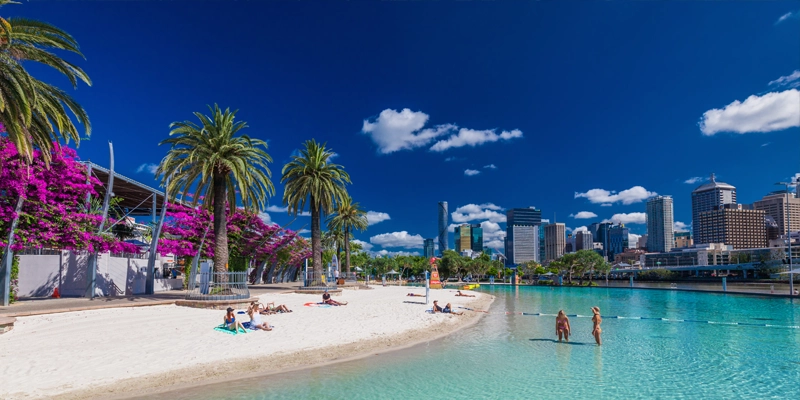
As autumn paints the city with a cooler palette, the City Botanic Gardens become a perfect locale for a stroll under a canopy of changing leaves. Come winter, the Brisbane Riverwalk is a sun-soaked route popular for leisurely walks, insulated from the chill by its sun-facing aspect and protection from winds. Spring in Brisbane is a time of renewal and nowhere is it more delightful than at the Mt. Coot-tha Botanic Gardens, where the air is fragrant with new blooms and the temperature is comfortably crisp.
Outside of seasonal retreats, year-round getaways like the Glass House Mountains offer an invigorating change of scenery and temperature with their diverse hiking trails and viewpoints. Culture enthusiasts can indulge in a climate-controlled environment at the museums and galleries within the South Bank's Cultural Centre, where the arts provide a cool reprieve. These spots are not just escapes; they enhance Brisbane's reputation for liveability, offering residents and visitors alike a variety of ways to enjoy the city's climate comfortably throughout the year.
Housing affordability in Brisbane
Housing affordability in Brisbane presents a comparatively favourable market, especially when stacked against its southern counterparts, Sydney and Melbourne. The city's real estate landscape is characterised by a mix of modern urban apartments, quaint Queenslander homes, and spacious suburban dwellings, catering to a diverse range of preferences and budgets. A key factor in Brisbane's housing market is the balance between metropolitan living and the appeal of its outer suburbs and townships, where property prices often offer more square footage for the dollar.
This affordability has been a drawcard for both international migrants and Australians from other states, leading to a trend of population growth and urban expansion. Despite this increase, Brisbane continues to offer a competitive market with opportunities for both first-time homebuyers and seasoned investors. Moreover, the city's ongoing infrastructure developments are poised to bolster property values over time, making it an attractive market for those looking to lay roots or seek out investment prospects in a dynamic, growing city.
What's the median house price in Brisbane?
If you're considering buying a house before moving to Brisbane, the city offers a diverse housing market with median house prices that cater to a wide range of lifestyles and budgets. The overall median house price in Brisbane sits at about $848,680 according to CoreLogic Data, but this figure varies significantly across different suburbs. For budget-conscious homebuyers, Eagleby presents an affordable choice with a median house price of $490,625, positioned to the southeast of the city centre, offering a tranquil setting near the Logan River. In the middle price range, Acacia Ridge and Strathpine offer great value at $613,500 to $655,000, with Acacia Ridge located to the south and Strathpine to the north, both providing suburban comfort and a community atmosphere.
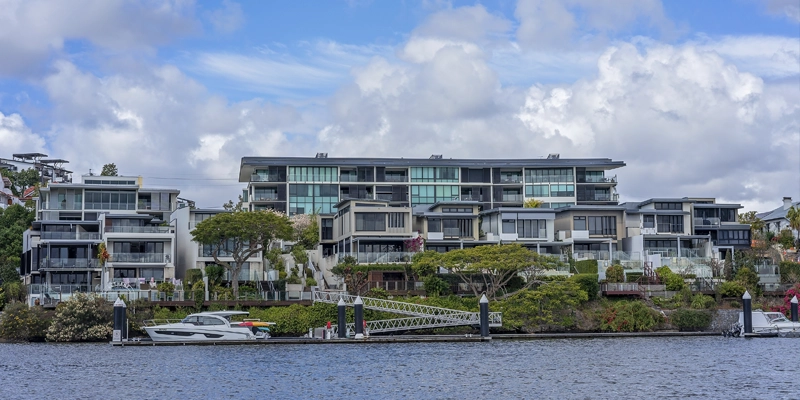 If you are seeking premium living, the inner northern suburb of Hendra and the northeastern suburb of Clayfield are prime locations with median house prices at $1,582,500 and $1,600,000 respectively, boasting close proximity to the CBD and high-quality local amenities. Meanwhile, the inner-city suburb of Spring Hill surprises with a more modest median of $550,000, offering vibrant urban living just a stone's throw from Brisbane's heart. From the family-friendly streets of northern Bracken Ridge to the leafy, affluent southern suburb of Yeronga, Brisbane's varied suburbs ensure that whether you're after urban convenience or a spacious suburban home, there's a place for you to find your perfect Queensland haven. Just make sure you find a local Brisbane real estate agent who can share some local insights with you.
If you are seeking premium living, the inner northern suburb of Hendra and the northeastern suburb of Clayfield are prime locations with median house prices at $1,582,500 and $1,600,000 respectively, boasting close proximity to the CBD and high-quality local amenities. Meanwhile, the inner-city suburb of Spring Hill surprises with a more modest median of $550,000, offering vibrant urban living just a stone's throw from Brisbane's heart. From the family-friendly streets of northern Bracken Ridge to the leafy, affluent southern suburb of Yeronga, Brisbane's varied suburbs ensure that whether you're after urban convenience or a spacious suburban home, there's a place for you to find your perfect Queensland haven. Just make sure you find a local Brisbane real estate agent who can share some local insights with you.
What's the median rental price in Brisbane?
When it comes to renting in Brisbane, you've got plenty of choices! The median rent across the city stands at $550 per week. But if you're after value, check out Eagleby to the southeast. You can snag a three-bedroom house for a competitive $460 or go for a more affordable two-bedroom unit at just $395 per week. For those who love the buzz of urban living, Spring Hill is the place to be. You can rent a two-bedroom unit there for around $550 per week, right in the heart of Brisbane.
Heading south to Acacia Ridge, you'll find a suburban lifestyle at a price below the city's median. Three-bedroom houses go for a median of $430 per week. And if you need even more space, head to Mount Warren Park in the southeast. There, you can find four-bedroom houses at a median of $570 per week, perfect for larger families or anyone who wants some extra room to stretch out.
In the northern suburbs, you can find three-bedroom houses in Strathpine for $540 per week, while neighbouring Bray Park has a similar median at $560 per week. If you prefer proximity to the bayside, Deagon offers two-bedroom houses at a median of $460 per week. For a family-friendly option, check out Bracken Ridge, where three-bedroom houses go for $595 per week.
Looking for something closer to the city? Sunnybank Hills and Moorooka have three-bedroom houses that match the city's median rent, at $570 and $550 per week respectively. Moorooka also has two-bedroom units at a median of $500 per week, which lines up perfectly with the Brisbane median.
If you're into the academic vibe, Kelvin Grove is a great choice with three-bedroom houses renting for just $439 per week, well below the city median. And if you want to be close to the CBD, East Brisbane has three-bedroom houses at the median rent, but two-bedroom units might cost a bit more due to its popularity and proximity.
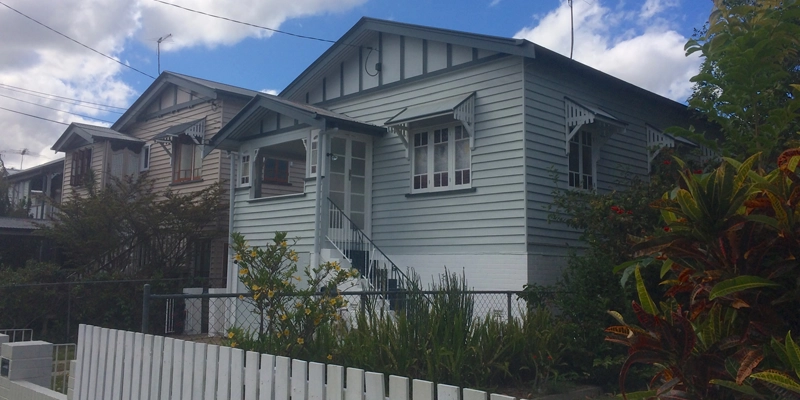
Yeronga, a lovely neighbourhood with quiet streets, has three-bedroom townhouses priced slightly below the city's median at $485 per week. On the other hand, Hendra offers a more upscale setting, listing three-bedroom houses at $650 per week, which is above the median.
And let's not forget about the prestigious Clayfield! It perfectly matches the city median for three-bedroom houses at $500 per week. Talk about consistency and value in a high-demand suburb!
No matter if you prefer the hustle and bustle of city living or the comfort of suburban space, Brisbane's range of median rents has got you covered. You'll find a rental option that suits your budget and lifestyle preferences in this vibrant Queensland capital. Just make sure you start looking for a place before moving to Brisbane to take the stress out of finding a place once you arrive.
Top 10 growth suburbs in Brisbane?
There are 10 suburbs that are experiencing notable growth, the current trends indicate several areas where property values have been on the rise. These are:
- Nathan, Brisbane - South: Leading the growth trend is Nathan, with a remarkable 13.3% increase in property values, bringing the median to $1,039,127. This suburb's growth could be linked to its close proximity to educational institutions and its relatively central location.
- Mt Gravatt, Brisbane - South: Mt Gravatt shows a 12.3% jump in property values to a median of $1,065,387. The suburb's mix of residential and commercial development, coupled with good connectivity and amenities, might be fueling this upswing.
- Sunnybank, Brisbane - South: Sunnybank has seen a 10.1% growth, with the median property value reaching $968,480. The suburb's cultural diversity and robust shopping and dining scene make it a popular choice for many homebuyers.
- Brisbane Inner-North: This part of Brisbane's inner city has grown by 8.4%, to a median value of $780,695. Its appeal lies in its urban lifestyle offerings and proximity to the CBD, making it a desirable location for professionals.
- Rocklea - Acacia Ridge, Brisbane - South: Property values in this area have increased by 8.2%, reaching a median of $883,663. The affordability of this suburb compared to its neighbours is a likely factor in its rising property values.
- Holland Park - Yeronga, Brisbane - South: Both suburbs are experiencing a 7.9% growth, with a median value of $862,820. Their growth can be attributed to their leafy streets, family-friendly parks, and a sense of community that appeals to many buyers.
- Nundah, Brisbane - North: Matching the 7.9% growth rate of Holland Park - Yeronga, Nundah's median property value stands at $783,970. Its village atmosphere and growing café culture, along with excellent transport options, are drawing in residents.
- Ipswich Inner, Ipswich: With a 7.8% increase in property values to a median of $539,489, this historic area is gaining popularity for its affordability and ongoing development projects.
- Beenleigh, Logan - Beaudesert: Beenleigh has experienced a 7.7% rise to a median value of $588,997. Its strategic location as a midpoint between Brisbane and the Gold Coast makes it an attractive spot for growth.
- Forest Lake - Oxley, Ipswich: These suburbs have seen a 6.8% growth, with the median value now at $630,697. The suburbs' family-friendly environment and amenities make them a hit among homebuyers.
Which areas offer affordable rents in Brisbane?
There are actually quite a few suburbs in Brisbane where you can find affordable rents compared to the city's median of $500 per week. Let's take a closer look at some of these areas:
- Eagleby: With a median rent for a three-bedroom house at $460 per week, Eagleby stands out as an affordable option. It is located to the southeast of Brisbane, offering a quieter lifestyle away from the inner-city bustle.
- Acacia Ridge: For those looking south of the CBD, Acacia Ridge offers three-bedroom houses at a median rent of $430 per week, presenting a suburban environment with a reasonable price tag.
- Deagon: North of Brisbane, Deagon offers two-bedroom houses at a median rent of $460 per week, making it an affordable option for small families or professionals looking for space without the inner-city rent premium.
- Kelvin Grove: Despite its proximity to the CBD and being a university hub, Kelvin Grove's median rent for a three-bedroom house sits at $439 per week, well below the city's median. However, rents for two-bedroom units in Kelvin Grove can be higher, reflecting the demand for student accommodations.
- Rocklea: Rocklea is traditionally known as one of the more affordable suburbs with a median rent of $350 per week, and a three-bedroom house can be rented for $500 per week.
- Spring Hill: Surprisingly, for its proximity to the CBD, Spring Hill offers two-bedroom units at a median rent of $550 per week. While slightly above the overall median rent, it still represents good value considering the location.
When you're on the hunt for affordable rents in Brisbane, it's not just about the cost of rent. You gotta think about the whole package – the vibe of the neighbourhood, the amenities nearby, and how easy it is to get around. And hey, don't forget about the value you can get further from the CBD! Those suburbs give you more bang for your buck and extra space for your family. So keep all these things in mind when you're making your decision!
Brisbane's cost of living
As Brisbane's popularity and growth continue, the cost of living is also on the rise. But don't worry, it still offers a competitive economic advantage. With lower housing prices and a robust local economy, you can enjoy the perks of a metropolitan city without breaking the bank. Here's what it looks like for some everyday items:
Groceries/Food
| Everyday Item | Price (AUD) |
| Milk (1 litre) | $2.23 |
| Bread (1 loaf) | $3.62 |
| Rice (1kg) | $3.45 |
| Chicken breast (1kg) | $13.20 |
| Eggs (a dozen) | $6.02 |
| Apples (1kg) | $4.83 |
| Tomatoes (1kg) | $4.69 |
| Lettuce (1 head) | $4.23 |
| Coffee (standard cappuccino in a cafe) | $5.50 |
| Beer (500ml) | $7.37 |
Utilities
| Electricity | Fees/Tariffs (AUD) |
| Daily supply charge | $1.20 per day |
| General usage charge | 26.40 - 28.89 cents per kilowatt-hour (kwh) |
| Average cost 2-3 people | $170 per month |
| Gas | |
| Fixed daily charge | 75.36 cents per day |
| Usage charge | 5.11 cents per megajoule(MJ) |
| Water | |
| Urban utilites water charges(Daily Price x Days Charged x Dwelling Count) | $0.64 per kilolitre |
| State bulk water charges | $3.37 per kilolitre |
| Sewerage service charge 2023-2024 - Brisbane(Daily Price x Days Charged x Dwelling Count) | $1.79 |
| Sewerage service charge 2023-2024 - Ipswich, Scenic Rim, Somerset, Lockyer Valley | $1.87 |
| Variable water charges | $0.83 per kilolitre up to 822 Litres per day |
| Variable water charges | $1.74 per kilolitre above 822 Litres per day |
| NBN Internet | |
| 25 Mbps or more, unlimited data | From $64.90 per month |
| 50 Mbps or more, unlimited data | From $75.00 per month |
| 100 Mbps or more, unlimited data | From $99.00 per month |
Transportation
| Transportation Expense | Price (AUD) |
| Unleaded petrol (1 Litre) | $1.80 |
| Diesel petrol (1 Litre) | $2.13 |
| Daily transport fare zone 1(public transport - full fare) | $5.10 |
| Taxi (tariff per 1km) | $2.48 |
Finding work in Brisbane
As Australia's third most populous city, Brisbane has been a significant centre for employment, marked by dynamic economic development and evolving job prospects. Despite global economic uncertainty, particularly influenced by the COVID-19 pandemic, Brisbane's job market has shown resilience and even growth in certain sectors. If you are moving to Brisbane for work, make sure you know exactly when you start so you can plan the move. But if you're a job seeker exploring opportunities in Brisbane, understanding the latest employment trends is key to finding promising roles.
Employment trends in Brisbane
According to the latest data from the Australia Bureau of Statistics in 2021, the total number of persons employed aged 15 years and over grew to 1,244,782 in 2021 and the unemployment rate in Brisbane has seen a notable decrease from 7.4% in 2016 to 5.5% in 2021. The decrease in unemployment suggests that Brisbane is not only recovering post-COVID-19 pandemic but also potentially transitioning into a period of economic expansion. This provides a favourable environment for job seekers, with more diverse opportunities and a more stable job market with trending growth in the following sectors:
- Health Care and Social Assistance: Aligning with national trends, the health care sector in Brisbane has experienced a robust increase, with employment percentages rising from 13.1% in 2016 to an impressive 15.3% in 2021. This growth can be attributed to an aging population, the city's response to the health crisis, and a growing focus on mental health and well-being. Positions in nursing, aged care, and allied health professions are particularly in demand.
- Professional, Scientific, and Technical Services: These sectors have rebounded from a slight dip to 8.5% in 2021, indicating a surge in opportunities for professionals such as IT consultants, engineers, and scientific research experts. Brisbane's focus on innovation and technology has fostered job creation in these areas.
- Construction: The construction industry has maintained a steady share of the employment market at 8.6%, reflective of ongoing infrastructure projects and residential developments in and around Brisbane. Skilled tradespeople, project managers, and civil engineers are likely to find numerous job openings.
Opportunities and roles
- Technology and Digital Services: As digital transformation accelerates, there is a growing need for IT professionals. The rise of remote work and the digital economy has created roles in cybersecurity, software development, and digital marketing.
- Education and Training: With 9% of the employment share in 2021, educators and trainers have considerable opportunities, especially in vocational education and training (VET), tertiary education, and corporate training roles.
- Administrative and Support Services: Holding 3.4% of employment in 2021, administrative roles continue to be crucial, with opportunities ranging from office administration to specialised support services.
Living the lifestyle and culture of Brisbane?
Ah, Brisbane! It’s the kind of city where the sun seems to smile at you, and so do the people. Brisbanites? They’re a laid-back bunch, always ready with a "G'day" and rarely caught in a rush. It's like the city runs on a 'chill' vibe — whether you’re strolling along the South Bank or grabbing a flat white from a funky cafe in the West End. And talk about a welcome mat — it doesn’t matter where you’re from, you’ll find friends here at a backyard BBQ or a local footy game before you know it. Diversity? It’s the spice of life in Brisbane, reflected in the kaleidoscope of festivals, food, and faces. Yet, with all this buzz, there’s a beautiful balance; the city knows when to hustle and when to hit the pause button — giving you the time to soak up the sun and just enjoy life.
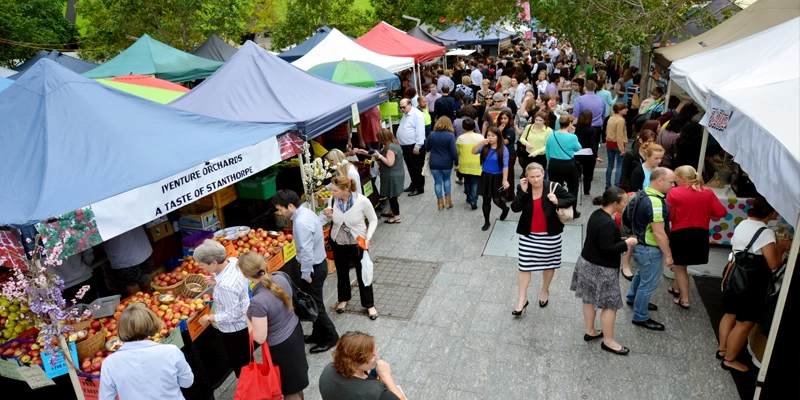
Weekends in Brisbane often start with a morning stroll or cycle along the Brisbane Riverwalk, with locals soaking up the sunshine and river breezes. Many head to the city's numerous farmers' markets, such as the Jan Powers Farmers Markets or the Davies Park Market, to grab fresh produce or enjoy artisan treats. Afternoons might be spent at South Bank Parklands, where folks laze on the man-made beach, enjoy a barbecue, or perhaps catch a performance at the Queensland Performing Arts Centre (QPAC).
On a typical Friday night, you might find Brisbane residents enjoying the city’s food scene — from sizzling Asian cuisine in Sunnybank to modern Australian fare in the buzzing Eat Street Northshore markets. Others might be sipping craft beers in a laid-back Fortitude Valley bar or enjoying a cocktail with a view at one of the many rooftop spots in the CBD.
It's the blend of urban sophistication and casual charm that' Brisbane people just love. The city is big enough to host an international art exhibit at GOMA (Gallery of Modern Art) but small enough to run into friends at a local cafe. There’s a genuine sense of community, whether you’re cheering on the Brisbane Lions at The Gabba or taking a yoga class in the Botanic Gardens.
That’s Brisbane for you: a welcoming city with a big heart and an easy-going rhythm that’s just so easy to fall in love with.
Must-see key events, festivals, and places
Brisbane is home to several key events and festivals throughout the year. The Brisbane Festival lights up the vibrant city each September with a program of music, theatre, dance, and a spectacular fireworks display known as Riverfire. Music lovers flock to the annual BIGSOUND Festival in Fortitude Valley, showcasing the latest in Australia’s music scene and that's the start of it. If you want to call yourself a Brisbanite, you must take the time to see and immerse yourself in the following of Brisbane's beauties:
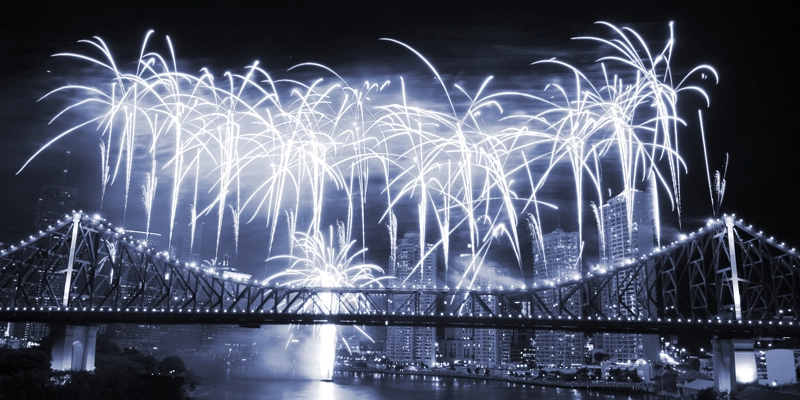
Places of Interest:
- Riverfire Festival: An annual spectacle that is part of the Brisbane Festival, Riverfire is a pyrotechnic display that lights up the skyline and is unique to Brisbane. The event involves a stunning fireworks show set to music and often includes aerial displays by the Australian Defence Force. It's a night when residents and visitors line the banks of the Brisbane River, rooftop bars, and city vantages to witness the sky burst into colour.
- Ekka - The Royal Queensland Show: A unique annual agricultural show in Brisbane, celebrating over a century of tradition. It brings the countryside to the diverse city with live entertainment, animal competitions, rides, artisan food, and educational exhibits. This iconic event showcases Queensland's rich agricultural heritage. Enjoy sheepdog trials, horse jumping, award-winning local wines and cheeses. The show concludes with 'People's Day', a public holiday featuring a dazzling fireworks display, beloved by Brisbane's residents.
- South Bank Parklands: This cultural, social, educational and recreational precinct features the Wheel of Brisbane, Streets Beach, and a plethora of dining options. It's perfect for leisurely walks, swimming, and enjoying alfresco meals with views of the Brisbane River.
Nature's Bounty:
- Moreton Bay: Just off the coast, Moreton Bay is a haven for water sports, dolphin feeding, snorkelling around shipwrecks, and during the right season, whale watching.
- D’Aguilar National Park: A short drive from Brisbane’s CBD, this park offers bushwalking, stunning lookouts, and the chance to see native wildlife in their natural habitat. It’s a slice of wilderness with rainforests, eucalypt woodlands, and creeks.
- Mount Coot-tha Reserve: Home to the Brisbane Lookout, Mount Coot-tha has extensive hiking trails, the Brisbane Botanic Gardens, and is a popular spot for picnics with sweeping views of the city skyline.
These destinations offer a mix of urban exploration and natural wonder, showcasing the versatility of Brisbane as a place to experience both cultural landmarks and the beauty of the Australian landscape.
Education and Healthcare in Brisbane
Brisbane also houses a comprehensive education system, ranging from early learning to tertiary education. The city's educational landscape is diverse, offering a variety of choices for students at every stage of their academic journey.
Schooling in Brisbane
Brisbane has a great variety of early learning centres and childcare facilities, showing how much they value early childhood education. Many of these centres focus on play-based learning, which helps kids develop their social, cognitive, and fine motor skills. It's really cool to see how Brisbane makes learning fun and interactive!
Brisbane's primary and secondary education system is supported by a network of government and independent schools, providing parents and students with a multitude of options. Government schools, known for their inclusivity and diverse programs, are funded by the state and adhere to a curriculum set by the Queensland Government. Independent schools, including religious, non-denominational, and Montessori schools, offer alternative educational philosophies and often boast smaller class sizes and unique extracurricular opportunities.
Many primary and high schools in Brisbane are equipped with state-of-the-art facilities, including science labs, performing arts centres, and sports fields. Special programs, such as STEAM (Science, Technology, Engineering, Arts, and Mathematics), cater to developing the diverse skill sets that students need in the 21st century.
Tertiary education and TAFEs
Brisbane is also home to several Technical and Further Education(TAFE) and world class universities. TAFEs which offer vocational education designed to provide practical skills for a wide range of careers. Courses in trades, hospitality, business, and health are popular, reflecting the demand for skilled professionals in these sectors.

As for Brisbane's renowned universities, which attract students from across the globe. The University of Queensland (UQ), Queensland University of Technology (QUT), and Griffith University are the most prominent.
- The University of Queensland is one of Australia's leading research and teaching institutions, known for its comprehensive programs and excellence in fields such as business, engineering, and medicine.
- Queensland University of Technology is celebrated for its focus on technical and creative studies, with strong programs in information technology, design, and education.
- Griffith University offers a broad range of degrees, with notable programs in environmental science, criminology, and the performing arts.
Education trends and current shifts in demand
In terms of trends, the Australian Bureau of Statistics data has shown an increase in the completion rate of year 12 or equivalent, climbing from 54.6% in 2011 to 63.9% in 2021. This highlights the value placed on secondary education as a gateway to tertiary studies and professional qualifications.
The field of study preferences among Brisbane's tertiary-educated populace reflects the evolving job market. There has been a noticeable increase in qualifications in management and commerce (from 18.8% in 2011 to 20.7% in 2021), health (from 9.4% to 10.9%), and society and culture (from 10.8% to 12.8%). These changes indicate a growing inclination towards sectors such as business, healthcare, and social services — areas that are crucial to the city’s socioeconomic fabric.
In contrast, there has been a decline in qualifications in engineering and related technologies (from 15.8% in 2011 to 13.8% in 2021), which might suggest a diversification away from traditional industries toward service-oriented roles that are increasingly in demand.
Brisbane's education system is well-prepared to meet the changing demands of its economy. There's a noticeable shift towards qualifications that support the service-driven job market. The city truly invests in education, from early learning to universities, aiming to create a knowledgeable and adaptable workforce that can tackle the challenges of the modern world. Tertiary education focuses on business, health, and societal studies, reflecting this strategic direction. This ensures that students moving to Brisbane to study are well-equipped for the future job market.
Extracurricular activities
In Brisbane, the array of extracurricular activities available is as broad and diverse as the city itself. While there are numerous common sporting clubs offering football, cricket, netball, and swimming, the city also prides itself on providing a variety of unique and enriching activities that cater to a wide range of interests, fostering the intellectual, creative, and physical development of both the young and the young at heart.
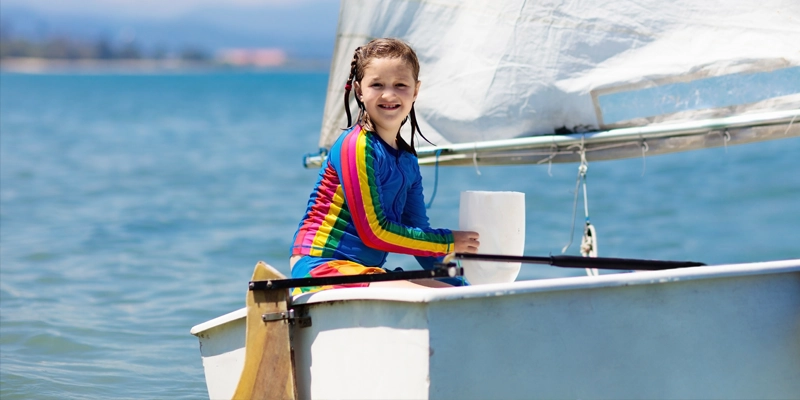 Here's a look at some of the specialised extracurricular activities available in Brisbane and where to find them:
Here's a look at some of the specialised extracurricular activities available in Brisbane and where to find them:
- Sailing at Royal Queensland Yacht Squadron - Situated in the picturesque Manly Harbour, the Royal Queensland Yacht Squadron provides sailing classes for enthusiasts of all ages. Whether you're a beginner looking to learn the ropes or an experienced sailor aiming to hone your skills, the Yacht Squadron offers a comprehensive sailing program in the calm waters of Moreton Bay.
- Rock climbing at Urban Climb - With multiple locations across Brisbane, Urban Climb caters to those who want to challenge themselves physically and mentally.
- Circus Arts at Circa - Circa in Fortitude Valley is not your typical extracurricular activity provider. This contemporary circus company offers classes for children, teens, and adults, teaching skills from acrobatics to aerial work. It's a place where you can run away with the circus while building strength, flexibility, and confidence.
- Coding at CoderDojo Brisbane - For the tech-inclined, CoderDojo Brisbane provides a collaborative, engaging environment to learn coding. It's a place where children and teens can learn how to build websites, create apps, and even program robots, all under the guidance of experienced mentors.
- Fencing at Brisbane Fencing Club - The Brisbane Fencing Club offers an opportunity to engage in the historic and strategic sport of fencing. It is a mentally challenging and physically active sport that is perfect for those who want to try something out of the ordinary.
- Language learning at the Institute of Modern Languages at the University of Queensland - For those looking to broaden their cultural horizons, the Institute offers a range of language courses. Learning a new language is not just a skill that can open doors to new opportunities; it's also a way to connect with different cultures and view the world from a new perspective.
Healthcare in Brisbane
Healthcare in Brisbane is of a high standard, reflecting Australia's overall commitment to quality and accessible medical services. The city is serviced by a network of public and private hospitals, clinics, and specialised health services. Major hospitals like the Royal Brisbane and Women's Hospital, Princess Alexandra Hospital, and the Mater Hospital are well-regarded institutions, offering comprehensive medical care across a wide range of specialties. These facilities are equipped with state-of-the-art technology and staffed by skilled healthcare professionals, ensuring residents have access to some of the best medical care in the country.
For newcomers to Brisbane, it's important to familiarise yourself with the Medicare system, which provides access to a range of healthcare services, free or at a lower cost, funded by the Australian government. It's also advisable to look into private health insurance options, which can cover services not fully covered by Medicare, such as dental or optical care. In an emergency, the number to dial is 000 for immediate medical assistance. Additionally, the 13 HEALTH (13 43 25 84) hotline is a valuable resource offering health advice from registered nurses 24/7. Understanding these basics ensures that new residents can navigate the healthcare system with confidence, knowing they have access to excellent medical care when needed.
How to get around
Driving in Brisbane
If you're planning to drive in Brisbane, whether you're arriving from overseas or moving from another part of Australia, there are a few key things you'll need to know to make sure you're on the right side of the road, both literally and figuratively!
For our international friends moving here
Welcome to Brisbane! You can drive with your overseas license as long as it's valid. Just remember, if it's not in English, you'll need an official translation or an International Driving Permit to accompany it. Enjoy your stay and take in the sights, but if you decide to stick around and become a resident, you have three months to convert to a Queensland license.
For Aussies moving from interstate
Good on you for choosing Brisbane! Your current license is good here too. If you're just visiting, drive freely on that license and bask in the Queensland sun. If you're moving here permanently, you've also got three months to switch over to a Queensland license.
Making the switch to a Queensland license
When it's time to make it official, here's what you'll need to do:
- Pop into a Transport and Motoring Customer Service Centre - It's where the magic happens.
- Fill in the paperwork - Grab a driver's license application form and fill it out.
- Prove you're you - You'll need to provide suitable evidence of your identity.
- Show you live here - You'll need to prove your Queensland residency.
- Eye test - You'll take a quick test to ensure you can see well enough to drive.
- Surrender your old license - Say goodbye to your old one; you'll be getting a shiny Queensland license.
- Pay the fee - There's usually a fee involved, so be prepared for that.
And that's about it! Once you've got your new license, you're all set to explore the beautiful city of Brisbane and beyond.
For the most current information, or if you have any questions, check in with the Queensland Department of Transport and Main Roads. They're the go-to source for all things driving-related in Queensland.
Major roads and freeways in Brisbane
Brisbane has a comprehensive network of arterial roads, motorways, and highways that connect the city to its suburbs and surrounding greater Brisbane region. Here’s a summary of the main routes to get familiar with:
Arterial roads
- Coronation Drive and Milton Road: These are major thoroughfares connecting the western suburbs and the city.
- Gympie Road: It's a key arterial route running north from the city, turning into the Bruce Highway.
- Ipswich Road: It heads southwest from the city and becomes the Ipswich Motorway.
- Logan Road: Serving the southeastern suburbs, it links to the Pacific Motorway.
- Sandgate Road: This road connects the northern suburbs to the city.
- Old Cleveland Road: It provides access to the eastern suburbs and connects to the Gateway Motorway.
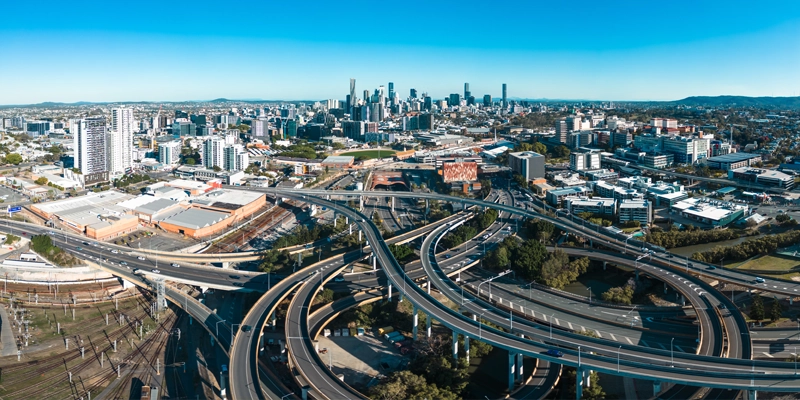
Motorways and Freeways
- M1/Pacific Motorway: Running south from the city to the Gold Coast, and extending up to the Sunshine Coast as the Bruce Highway (M1), it’s one of the main motorways in the region.
- M3/Centenary Motorway: Connecting the western suburbs with the city.
- M3/Riverside Expressway: It runs along the Brisbane River's edge in the central business district.
- M4/Ipswich Motorway: Linking Brisbane with Ipswich to the west.
- M5/Western Freeway: Heading out towards the western suburbs and the Moggill Ferry.
- M7/Clem Jones Tunnel (CLEM7): An underground motorway connecting the inner northern suburbs with the southern suburbs and Brisbane Airport.
- M7/Airport Link Tunnel: Connecting the CBD with the Brisbane Airport directly.
- M8/Inner City Bypass (ICB): Facilitating cross-city travel and connecting with several other motorways.
Highways
- Bruce Highway (M1): The major highway heading north from Brisbane towards the Sunshine Coast and extending further to Cairns.
- Cunningham Highway: Leading southwest from Brisbane to Warwick.
- Gateway Motorway (M2): Circling the city to the east and providing access to the Brisbane Airport, Port of Brisbane, and both the Sunshine Coast and Gold Coast via connections to the Pacific and Bruce Highways.
- Logan Motorway (M6): Connecting the M1 Pacific Motorway to the Ipswich Motorway, it serves as an important link between Brisbane, Ipswich, and the Gold Coast.
- Warrego Highway: Stretching westward, connecting to the Darling Downs region.
Feel like driving to Brisbane?
| Moving between | Route | Distance | Drive time |
| Interstate Sydney to Brisbane | via the Pacific Motorway (M1) and the New England Highway (A15) | 911km | 10-11hrs |
| Interstate Melbourne to Brisbane | via the Newell Highway (A39) and the Hume Highway (M31) | 1665km | 18-20hrs |
| Interstate Canberra to Brisbane | via the Newell Highway (A39) and the Hume Highway (M31) | 1246km | 13-14hrs |
| Interstate Adelaide to Brisbane | via the Newell Highway (A39) and the Sturt Highway (A20) | 2021km | 20-22hrs |
| Interstate Perth to Brisbane | via the National Highway (A1), across the Nullarbor Plain | 2785km | 31hrs |
| Interstate Hobart to Brisbane | via ferry crossing then M1 | 2565km | 33hrs |
| Interstate Darwin to Brisbane | via the Stuart Highway (A87) and the Landsborough Highway (A2) | 3424km | 37hrs |
| Cairns to Brisbane | via the Bruce Highway (A1) | 1707km | 19-21hrs |
| Gold Coast to Brisbane | via the Pacific Motorway (M1) | 79.2km | 1hr |
Buses, ferries, and public transport
Getting around here is pretty straightforward with a range of public transport options at your disposal.
Getting around by bus
Brisbane’s bus network is extensive. Operated by TransLink, the buses connect the CBD with suburbs far and wide. You'll find that during peak hours, there are plenty of express services that make commuting faster. The CityGlider buses offer high-frequency services and longer operating hours, which are especially convenient for getting around the inner city.
To use the buses, you can pay with a go card—a smart card that you tap on the card reader at the start and end of your journey. If you don’t have a go card, some services allow you to buy a paper ticket from the driver.
Travelling by train
The train system, which is also operated by TransLink, is a great way to travel to and from the outer suburbs and across South East Queensland. Taking the train is a smart choice if you're going longer distances or trying to avoid potential traffic on the roads. Brisbane’s Central and Roma Street stations are the main hubs for trains heading to the Gold Coast, Sunshine Coast, and out west. So hop on board and let the trains take you where you need to go!
Hop onto a CityCat ferry
One of the best ways to enjoy breathtaking views while getting around is by hopping on the CityCat ferries. These ferries cruise along the Brisbane River, connecting the university, CBD, and residential areas with regular services throughout the day. And guess what? There are also free CityHopper ferries that can take you to fantastic spots along the river, like the CBD, South Bank, and Kangaroo Point.
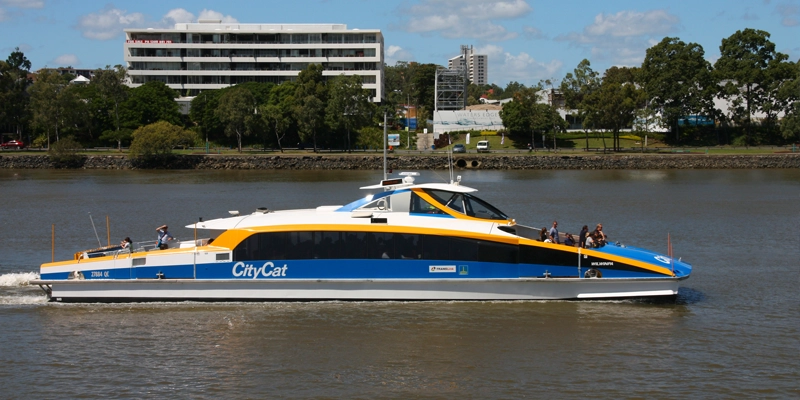
Using Brisbane's extensive public transport network
The go card is your golden ticket for all TransLink buses, trains, and ferries. You can purchase and top up a go card at various retailers, online, or at selected train stations. Just tap on when you board and tap off when you leave to ensure you're charged the correct fare.
Free travel periods
Brisbane has some perks when it comes to free travel. If you use a go card and make 9 paid journeys in a week, your travel is free for the rest of the week. Plus, there's the Free City Loop bus service that you can use to get around the CBD on weekdays.
Accessibility
Most of Brisbane’s public transport is accessible, with features to assist travellers with disabilities, including ramps on buses and lifts at train stations.
Walking and cycling in Brisbane
If you prefer to get around under your own steam, Brisbane is bike-friendly, with an extensive network of cycle paths, especially along the river and through the CBD. CityCycle bike hire is available if you don’t have your own wheels. The city is also conducive to walking, with pedestrian-friendly paths and bridges.
Popular bike trails in Brisbane
- Brisbane River Loop - This is a favourite among local cyclists, featuring a loop around the Brisbane River, passing through the CBD, West End, and South Bank.
- Kedron Brook Bikeway - Stretching from Mitchelton to Nudgee Beach, this trail is one of Brisbane's longest, offering a mix of parkland and urban scenery.
- Boondall Wetlands Bikeway - Located in the northern suburbs, this bikeway takes you through environmental reserves and wetlands, great for nature enthusiasts.
- V1 Veloway - The V1 Veloway is a dedicated cycleway that connects Brisbane CBD to the Gateway Motorway off-ramp at Eight Mile Plains, running alongside the Pacific Motorway.
- Centenary Bikeway - A long-distance route perfect for more experienced riders, connecting the western suburbs with the city.
- Bayside Bikeway - Ideal for a leisurely ride with views of the bay, it runs from the Gateway Bridge to Wynnum
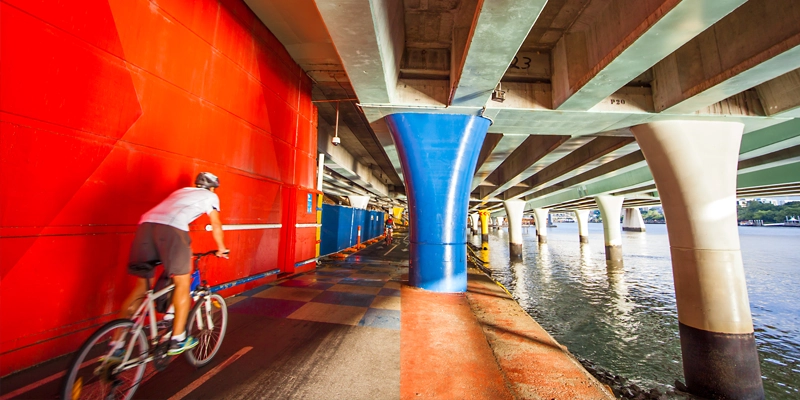
Popular walking paths and city bridges
- South Bank Promenade - A riverside walk with stunning views of the Brisbane River and the city skyline, perfect for a leisurely stroll or a brisk walk.
- Kangaroo Point Cliffs - Offers both a challenging walk up the cliffs and a scenic path along the river’s edge.
- Brisbane City Botanic Gardens - A peaceful walking path amidst lush gardens and old trees, right in the heart of the city.
- Mount Coot-tha Trails - A network of walking trails that offer everything from gentle walks to challenging hikes, with panoramic views of the city from the summit.
- Story Bridge Adventure Climb - For a unique perspective of Brisbane, you can walk across the Story Bridge. It’s not just a bridge but an adventure experience with guided climbs.
- Goodwill Bridge - A pedestrian and cyclist-only bridge that offers a direct and scenic connection between South Bank and the Brisbane CBD.
- New Farm Riverwalk - A floating walkway that takes you along the river, providing great views and a smooth path for walkers and joggers.
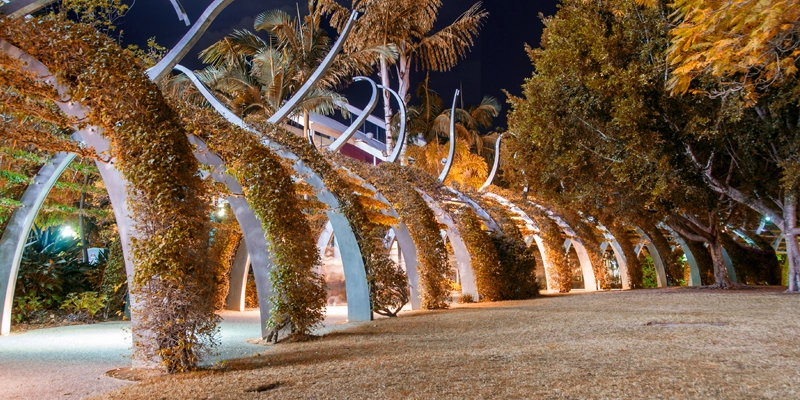
Each trail and path provides a unique way to experience Brisbane, whether you're looking for a vigorous workout or a peaceful retreat into nature. Don't forget to check local guides or Brisbane City Council’s website for more detailed information on trail lengths, access points, and difficulty ratings.
How to get to Brisbane
Whether you're moving from within Australia or from overseas, there are many different options you can take to get to Brisbane. These include by air, train or night train, coach bus and of course driving yourself.
By Air
The most direct route for international and many domestic travellers is flying into Brisbane Airport, which serves numerous airlines and connects Brisbane to many global and domestic destinations. Just a short drive or train ride from the city centre, the airport offers a quick and convenient gateway to the city's charms.
Primary airports
Brisbane is served primarily by one major airport, Brisbane Airport(BNE) which operates both domestic and international flights. This is the main airport in the city, and let me tell you, it's one of the biggest in Australia! It's got two terminals: the International Terminal for flights from all over the world, and the Domestic Terminal for flights within Australia. The airport is about 12 kilometres northeast of the city centre, but don't worry, there are plenty of ways to get to and from the city. You've got trains, buses, taxis, and even rideshare services at your disposal.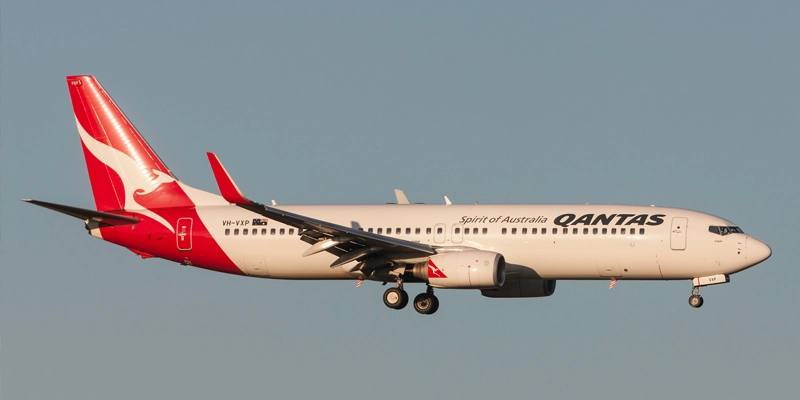
For the majority of travellers, BNE will be the main point of arrival and departure when accessing the city by air with the following airlines:
- Qantas
- Virgin Australia
- Jetstar
- Regional Express (Rex)
- Bonza
Other airports
While Brisbane Airport is the primary hub, other airports in the region can serve passengers looking to get to Brisbane:
Gold Coast Airport (OOL): Although it's about 100 kilometres south of Brisbane, near Coolangatta, it's an alternative for travelers who don't mind a scenic drive or transfer to Brisbane. It handles both domestic and international flights.
Sunshine Coast Airport (MCY): Located around 100 kilometres north of Brisbane in Marcoola, it's another option for travellers coming from or going to the northern regions of the Sunshine Coast.
Toowoomba Wellcamp Airport (WTB): Situated around 125 kilometres west of Brisbane, this is a smaller airport that offers domestic flights and can be a convenient option for those visiting the Darling Downs region.
Arriving into Brisbane internationally
You can get into Brisbane with several international airlines with frequent flights. Some well-known carriers that regularly serve Brisbane Airport include:
- Qantas: Australia's flag carrier operates a significant number of international flights to and from Brisbane, connecting to destinations like Los Angeles, Singapore, and Tokyo.
- Emirates: This Dubai-based airline offers services between Brisbane and Dubai, with connections to a vast network of global destinations.
- Singapore Airlines: A popular choice for travellers, Singapore Airlines connects Brisbane with Singapore and onward to numerous international locations.
- Cathay Pacific: The Hong Kong-based airline provides connections between Brisbane and Hong Kong, with onward flights to various destinations in Asia and beyond.
When to book a flight?
Booking a flight to Brisbane offers flexibility throughout the year. To avoid the busiest periods, be mindful of Australia's holiday seasons and major events. Peak travel times include Australian school holidays, the long summer break from mid-December to late January, Easter, and public holidays like ANZAC Day in April and Labour Day in October. The city also sees an influx of visitors during events like the Brisbane Festival in September and State of Origin rugby matches.
To secure the best deals and availability, book flights at least a few months in advance for peak periods. For quieter times, consider visiting in late spring (October to November) or late summer to early autumn (February to March). During these times, you can enjoy pleasant weather, fewer tourists, and more reasonably priced flights, accommodations, and attractions in Brisbane.
Flight duration
Brisbane's convenient central location in Australia makes it easily accessible from other major cities. Here's a rough guide on travel times with direct flights:
| Flying between | Approximate Flight duration |
| Sydney to Brisbane | 1hr and 30min |
| Melbourne to Brisbane | 2hr and 10min |
| Cairns to Brisbane | 2hr and 30min |
| Perth to Brisbane | 4hr 30min |
| Adelaide to Brisbane | 2hr 30min |
| Hobart to Brisbane | 2hr 50min |
| Canberra to Brisbane | 1hr 45min |
| Darwin to Brisbane | 3hr 45min |
Arriving by train
If you are looking for a more scenic route, Brisbane is well-connected by rail. Queensland Rail operates services from within Queensland, while NSW TrainLink offers routes from New South Wales departing Central Station and Southern Cross Station in Melbourne. The long-distance train, 'The Spirit of Queensland,' also connects Brisbane with Cairns and other regional destinations.
Arriving by coach
Numerous coach services, such as Greyhound and Premier Motor Service, provide road connections to Brisbane from major cities and regional areas. If travelling by coach from Sydney to Brisbane, the bus will stop at Newcastle, Port Macquarie, Coffs Harbour, Byron Bay, Tweed Heads, Surfers Paradise before arriving in Brisbane. Coaches are a budget-friendly option, with the added benefit of seeing the beautiful Australian landscape along the way.
Benefits of living in Brisbane
Brisbane is a compelling choice for those considering a new place to call home, offering a harmonious blend of lifestyle perks that cater to a diverse population. Here's how you would benefit from living in Brisbane.
- Experience up to 3000 hours of sunshine per year - The city enjoys a subtropical climate with warm or hot weather for most of the year, which is not only delightful for those who prefer sunshine over snow but has also been suggested to benefit individuals with eczema. The milder winters and moderate humidity can be a balm for those suffering from this skin condition, offering natural relief that’s hard to find in cooler climates.
- Attractive and affordable housing market - In terms of financial practicality, Brisbane presents an attractive housing market with affordability that outshines its southern counterparts like Sydney and Melbourne. You'll find that your dollar stretches further here, whether you're buying or renting, allowing for a higher quality of life and the opportunity to enjoy the city's vibrant culture and amenities.
- Annual calendar of entertainment - Brisbane is a burgeoning hub for the arts, dining, and entertainment, hosting an array of festivals, galleries, and theatres that showcase both local and international talent. The city's culinary scene is a testament to its diversity, with a smorgasbord of global cuisines to explore.
- Playground for the outdoor lifestyle - Anyone with a love for the great outdoors will revel in Brisbane's natural beauty, from the picturesque Brisbane River that meanders through the city, to the lush parks and nearby beaches. It’s a playground for activities like cycling, hiking, and boating, encouraging a lifestyle that keeps you active and engaged with the environment.
- A thriving and robust economy - Sectors like technology, healthcare, and education, providing ample employment opportunities for professionals.
With its favourable weather, affordable living, rich culture, and friendly community, Brisbane is not just a place to live—it’s a place to thrive. It represents a balanced lifestyle that’s hard to match, making it an excellent option if you are looking to relocate.
What you can experience only in Brisbane
Brisbane offers a number of unique experiences that stand out even in a country as diverse as Australia. Here are four of the best experiences that you can only find in Brisbane:
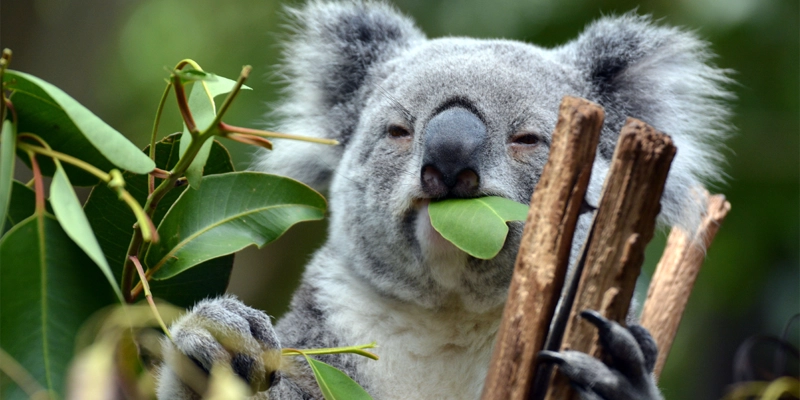
- Lone Pine Koala Sanctuary: Brisbane is home to the world's oldest and largest koala sanctuary, the Lone Pine Koala Sanctuary. Here, you can actually hold a koala—a moment that'll give you all the feels and some unforgettable selfies.
- Climb the Story Bridge: While bridge climbs can be found in a few places around the world, Brisbane's Story Bridge offers a unique urban adventure. This iconic structure provides climbers with panoramic views of the city, the Brisbane River, and the distant mountains. A view that’ll etch itself in your memory. Picture the Brisbane River sparkling below as you ascend, the city sprawling around you—it's an urban climb with a twist.
- The Cultural Precinct at South Bank: Brisbane's cultural precinct is a one-of-a-kind arts and entertainment hub located on the South Bank. This is where you can soak up some local culture and enjoy Brisbane's famed Queensland Performing Arts Centre, Queensland Museum, Queensland Art Gallery, Gallery of Modern Art (GOMA), and the State Library of Queensland. The precinct regularly hosts world-class exhibitions and performances that are unique to the region.
- Riverlife Adventure Centre: For something a bit more adrenaline-pumping, how about kayaking along the Brisbane River? Paddle by day to see the city in its sunny glory or have a unique perspective of night paddling to witness the twinkling city lights dancing on the water. It’s not every day you get to see a city’s beauty from the vantage point of a kayak You can also try paddleboarding, and rock climbing right on the Brisbane River's edge.
Each of these experiences captures the essence of Brisbane, showcasing the city's love for nature, adventure, culture, and its unique urban lifestyle. Whether it’s through wildlife encounters or cultural explorations, these attractions provide unforgettable moments that are quintessentially Brisbane.
Tips for moving in Brisbane
Moving to a new city is a big step, and Brisbane, with its laid-back charm and sunny disposition, is a fantastic choice. To make your transition as smooth as possible, here are some tips to consider:
- Choose your suburb wisely: Brisbane is spread out with a mix of inner-city living, suburban areas, and semi-rural locales. Consider proximity to work or schools, access to public transport, and the local lifestyle when choosing your suburb. Inner suburbs offer vibrant nightlife and are close to cultural precincts, while outer Brisbane suburbs can provide more space and a quieter environment.
- Prepare for the heat: Brisbane's weather can get quite hot, especially in summer. Look for homes with good air conditioning, or at least ensure the place has adequate ventilation and shade. Remember, electricity costs can spike in the warmer months due to air conditioning use, so factor this into your budget.
- Understand the transport options: If you rely on public transport, familiarise yourself with TransLink's network of buses, trains, and ferries. Consider living in a location with good service coverage. If you drive, be mindful of peak-hour traffic, especially if you're commuting to the CBD.
- Be flood-savvy: Some areas of Brisbane are prone to flooding. Check the Brisbane City Council's flood maps when choosing your home. Avoiding flood-prone areas can save you a lot of trouble and money. Choose removalists in Brisbane who are aware of flood-prone roads to avoid during your move.
- Embrace outdoor living: Brisbane's lifestyle is geared towards the outdoors. Whether it’s a BBQ, a deck, or a pool, having a space to enjoy the outdoors can enhance your Brisbane living experience. Look for homes that offer these amenities, and you'll be living like a local in no time.
- Get connected: Brisbane has a friendly community vibe, and getting to know your neighbours or joining local groups can help you settle in. Platforms like Meetup or local Facebook community groups can be great for making new friends and professional networking.
Final thoughts
As you come to the end of this moving to Brisbane guide, we hope to have opened your eyes to what life in Brisbane can be as you step into a new chapter in a city where a simple "G'day" is never far away, and the pace of life sways comfortably between the relaxed and the exhilarating. This 'River City' is a haven for those seeking a lifestyle that marries the tranquillity of leafy suburbs with the vibrant beat of urban precincts. Brisbane is a place where the dream of a perfect home in the Sunshine State is alive and within reach.
Your future in Brisbane is a place where the outdoor lifestyle is not just encouraged but celebrated, where the climate is an invitation to explore, and where the community spirit is as bright and welcoming as the Queensland sun. Whether it's the thrill of a Story Bridge climb, a leisurely day by the Streets Beach, or the cultural immersion of the South Bank precinct, Brisbane offers unique experiences that you’d be hard-pressed to find elsewhere.
So, as you plan your move, remember to choose your suburb wisely, prepare for the subtropical heat, and embrace the outdoor ethos that is quintessentially Brisbane. It’s a lifestyle Brisbanites are proud of, a community to join, and an adventure to begin. So, pack your bags, your dreams, and your sense of adventure; Brisbane is waiting to welcome you and your family to your new Brisbane home.
Helpful Brisbane resources
If you're planning to move to Brisbane, there are a few government authority websites that can help provide all the essential info and services you need. Don't forget to check them out:
- Brisbane City Council - The official website for the Brisbane City Council is an essential resource for new residents. It provides comprehensive information on living and working in Brisbane, community services, local laws, and regulations, as well as details on public transportation and ongoing infrastructure projects.
- Queensland Government -This is the gateway to the state government of Queensland, offering resources on a range of topics including health, education, housing, and community services. It also provides insights into state-wide initiatives, employment support, and information pertinent to residents and businesses alike.
- TransLink - TransLink is the Queensland Government's primary public transportation planner. Their website offers schedules, fare calculators, service updates, and everything else one needs to navigate the public transport system in Brisbane, from buses to ferries and trains.
- Queensland Department of Transport and Main Roads - This department's website is crucial for new residents who need to obtain a Queensland driver's license, register a vehicle, or learn about local road safety regulations. It provides updates on road conditions, construction projects, and licensing services.
- Australian Government Department of Home Affairs - While not Queensland-specific, this federal government site is a vital resource for international movers. It offers information on visas, citizenship, border security, and customs regulations. For those relocating from overseas, this website is the first stop for understanding the legal requirements for moving to and living in Australia.
Disclaimer:
All values, prices, and related financial information provided on this platform or in our communications are for informational purposes only. While we strive to maintain accurate and up-to-date information, errors or discrepancies may occur. Furthermore, values and prices can fluctuate based on various factors, including market dynamics, time, geographic region, and external influences.
Ready to Move? Find Your Perfect Mover!
Don't let moving stress you out. Compare quotes from our network of reliable movers, read genuine reviews, and book with ease. Save time, save money, and start your move with confidence today.
- Quickly compare movers
- Read verified reviews
- Book online with confidence
